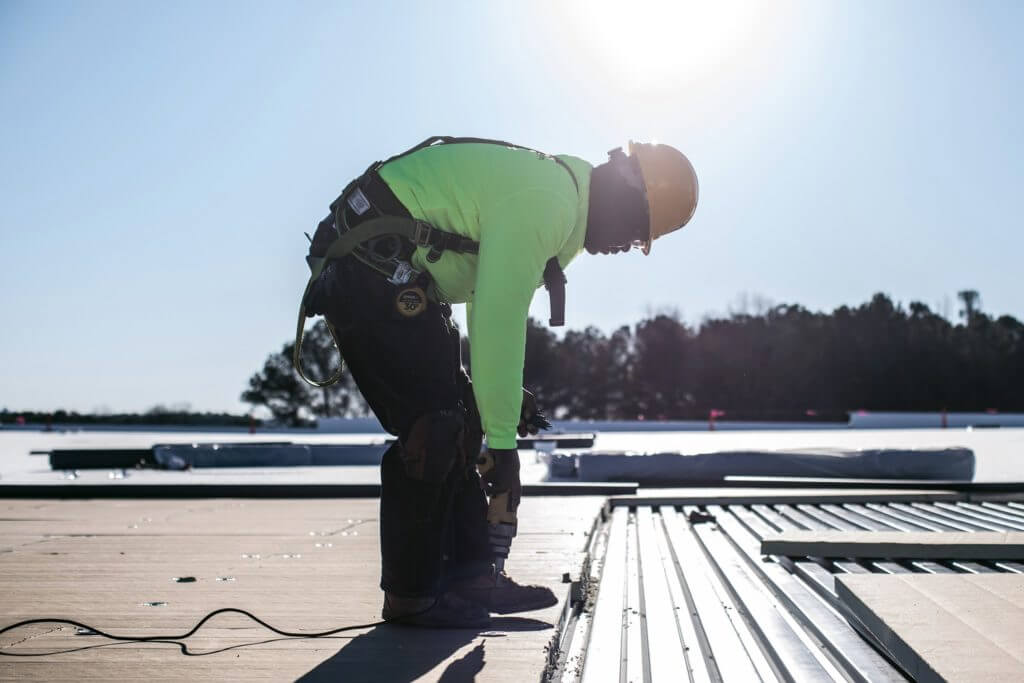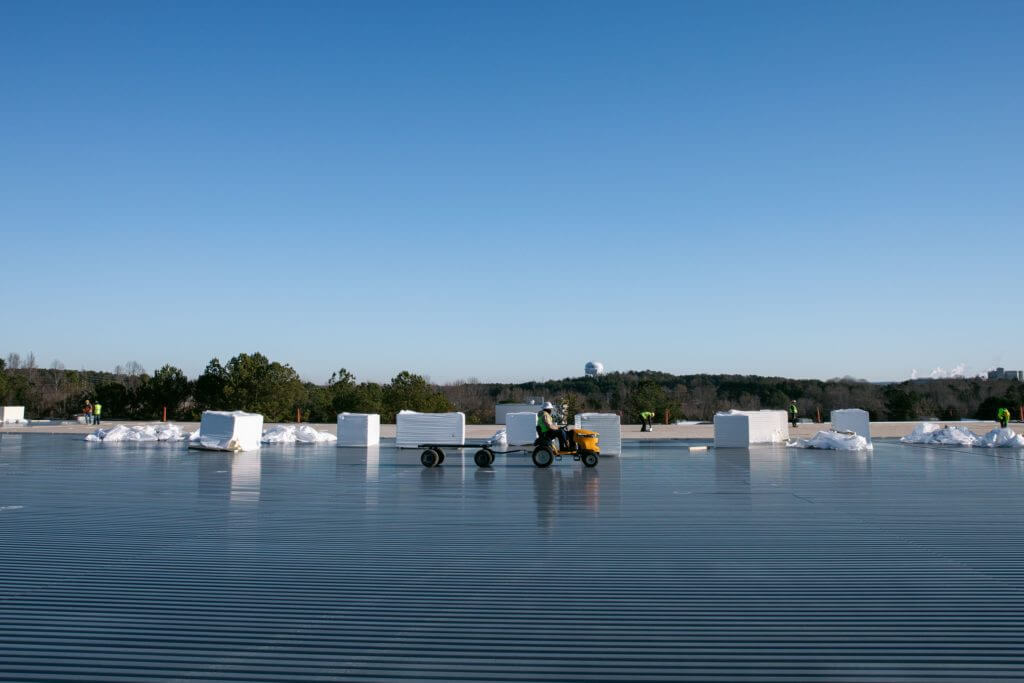How the Summer Heat Can Impact Your Roof


The summer season brings more than barbecues and beach trips. While we all love a good lakeside splash to escape the heat, those scorching temperatures can have a direct impact on your facility’s roof. Weather patterns, changes in temperature, and other factors all present unique challenges for your roof this time of year. It’s important to be aware of how these things can affect your roof’s overall lifecycle so you’re prepared to protect and maintain your roof through the season.
How does direct sunlight affect a roof?
Your roof is most notably impacted by direct sunlight in two ways, the first being simply heat transfer. During the summer, the temperature of the air is warmer and your roof’s total sun exposure is extended with the longer hours of daylight. Any roof membrane or building material will respond to that heat exchange by expanding with the heat of the day and contracting in the cooler evenings and overnight. This daily sequence of temperature variation can create stress points where roof components connect to each other. Routine roof system inspections should include checking on these areas of concern and advising when repairs are necessary. Mid-South includes this service as part of our regular roof maintenance plans.
Most single-ply membranes are affected over time by the sun’s UV rays. The different chemicals of which they’re composed have a service-life that degrades over time. Single-ply membrane lifespans are dependent on membrane thickness and the percentage of specific chemicals within the membrane. Most manufacturers design a roof warranty around this exposure. Mid-South’s service team can help you keep track of the status of your roof membrane’s level of membrane degradation and let you know when it’s time to think about replacement.
A note on roof construction: Elements such as insulation and membrane thickness and membrane type are strategically selected by your roof manufacturer. They’ll consider factors like roof traffic and weather conditions in your area to help you build the best roof for your specific building needs.
What is thermal shock?
“Thermal shock” is a term that describes the mechanical load that results from a rapid change in temperature. On a hot summer day, the surface of your roof will be upwards of 20-30° hotter than the evening air temperature. When a sudden temperature change occurs, like a thunderstorm, for example, a drop in temperature results and puts an immediate strain on the roof. The rapid expansion/contraction cycle happens much more quickly in the summer and exaggerates the stress on your roof.
And what about those summer storms?
Any type of major storm (including wind, thunder, lightning, and hail) is a concern for your roof. Preparing for these forces of nature starts on the design side. That’s why we emphasize the importance of quality roof installation. If you know that a big storm is on its way you can proactively schedule a maintenance check and ensure that all debris has been removed from the roof prior to the weather event. It may also be advantageous to get in touch with your HVAC company to ensure equipment is secured.
Following a large storm, it is highly recommended that you have your roof inspected for potential damage. While you might not observe any immediate physical damage, your roof may still be compromised and develop problems over time.
Hail damage is a major concern with storms. While hail doesn’t always present an urgent problem, it’s safe to assume your building has experienced some degree of damage with hail exposure. High winds can also move debris across your roof causing issues similar to those that come with hail exposure down the road.
If you have a significant downpour in a short period of time, your roof is also at risk of ponding. If large amounts of water remain on your roof for more than 48-hours after a storm, it’s a cause for concern. Additionally, if you have internal roof drains instead of a gutter system, a large pool can accumulate on your roof. Catastrophic consequences such as collapsed roofs have been observed as a result of major ponding.
Safety first in the heat
From a safety standpoint, it would be a massive liability to allow someone who is not experienced with heights or roof navigation to inspect your roof system. It’s extremely important to consult with a roofing expert when coordinating your routine inspections and maintenance.
Working at dangerous heights in the heat of the summer is an added challenge for a roofing crew. At Mid-South, we intentionally and frequently communicate summer-specific safety instructions to our team. Our weekly Toolbox Talks are focused on the importance of staying hydrated, incorporating frequent breaks, and finding shade under the canopies provided. We supply our crew with dry-fit, high-visibility, long-sleeved shirts as part of their summer uniform. Dry-fit material keeps them cool and long-sleeves protect against extended sun exposure. Our team is prepared to get the job done the right way while keeping safety as the number one priority.
Mid-South team members take great pride in servicing and repairing your roof, no matter the season. Our team is trained to monitor potential seasonal problem areas and proactively address issues before they arise. We’ll check for cracks in your sealant, unsecured equipment, and debris. We’ll confirm that waterways, gutters, and drainage areas are cleared to allow proper drainage. Get in touch with us to schedule your summer service. We’ll ensure that your roof is ready to beat the heat so you can rest easy and enjoy the season.
LIKE WHAT YOU JUST READ?
Sign up for our newsletter to get fresh articles, updates and more!
Common Misconceptions Related to Commercial Roofing
Our team at Mid-South Roof Systems brainstormed some of the most common myths about commercial roofing that we’ve encountered in our 35+ years of experience. The result of that mental exercise is the following true or false game designed to debunk these myths and uncover the truth about our multifaceted industry.
Red Flags That You Have Hired the Wrong Roofer
There’s a lot of responsibility involved in putting a roof over someone’s head. Roofs provide us shelter, safety and warmth; so we shouldn’t trust just anyone to provide and install this complex component of a construction project. A good roofing contractor provides not only skilled craftsmanship, but honest, open communication, plus a commitment to get…


